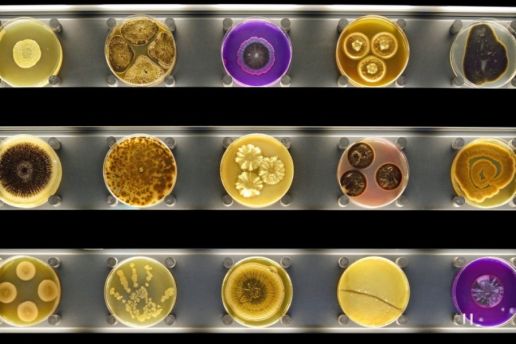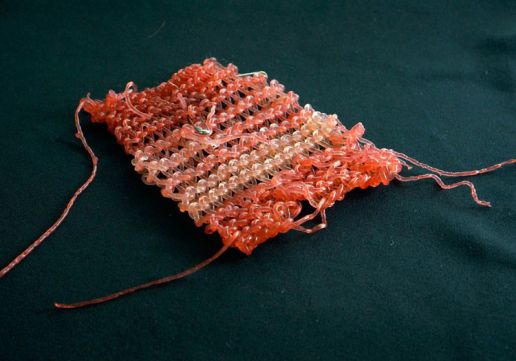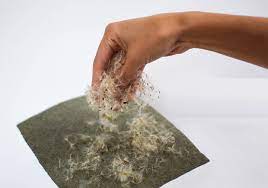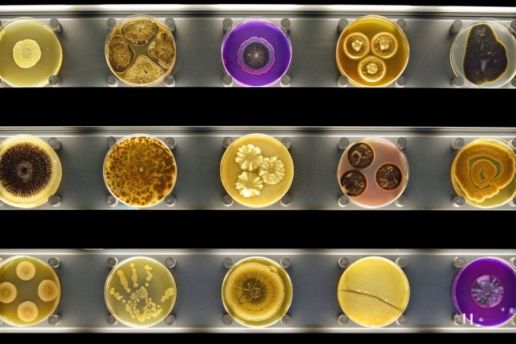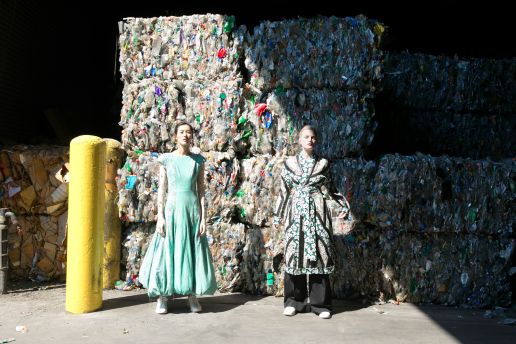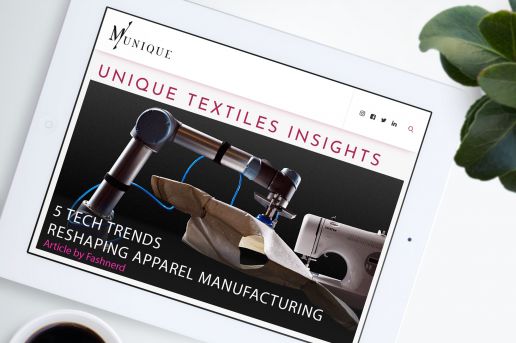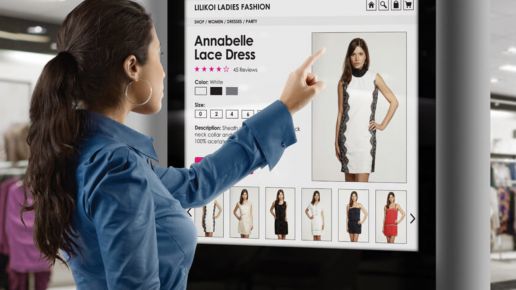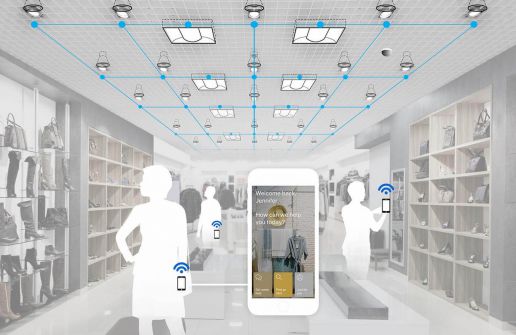Fashnerd
Textile Inventions You Need To Be Acquainted With In 2022
Textile Inventions You Need To Be Acquainted With In 2022
(If You Are Not Already)
AN INDUSTRY INSIGHT BY FASHNERD FOUNDER MUCHANETA KAPFUNDE.
The race to digitise the textile sector is expected to continue to gain momentum throughout 2022. However, with sustainability still a key theme, the good news is that game-changing innovations are helping a very traditional industry recognise business opportunities that push towards a fundamental shift in industry practices and any future developments.
Reimagining the Textiles System With a New Mindset
No longer held back by conventional processes, more and more textile manufacturers, suppliers, buyers, and designers are now transitioning towards a textile system that allows them to harness better economic, societal, and environmental outcomes. In addition, prioritising the application of new technologies has helped the textile industry take those first steps of progress towards adopting new business models, technological innovation, and radical collaboration.
“Our success depends not only on the work within our own value chain but on disruptive partnerships across a broader textile production and manufacturing ecosystem,” stated Cyrus Wadia, VP Sustainable Business and Innovation at Nike, in the Ellen MacArthur Foundation report “A New Textiles Economy: Redesigning Fashion’s Future”.
As technology continues to have a significant impact on the textile industry, in 2022, make sure you keep an eye on the following innovations from these three game-changing companies:
1. Kelp – One Of The Most Renewable Natural Resources: Algiknit
In the business to make textile production more environmentally conscious, Algiknit offers material options that perform as well as conventional materials.
“The yarn we’re producing today has the look and feel of the natural fibres consumers are familiar with, plus all the makings of a no-compromise conscious material,” said Aaron Nesser, co-founder and CTO of AlgiKnit, in a statement.
Staying ahead of the curve in fabric innovations, Algiknit could effectively bring kelp-based yarn into the mainstream. The startup is currently poised to scale the production of eco-conscious yarns for use by forward-thinking global fashion brands.
With Kelp considered one of the most renewable natural resources globally, the Brooklyn-based material-maker of carbon-neutral, toxic-free textiles has spent the past four years developing technology to produce yarns on a commercial scale. They hope that they will be able to scale production to a point where they will be able to meet growing material demand in time.
2. Freshwater-free Textile Fibres, The Next Alternative: SaltyCo
UK startup, SaltyCO, has come up with freshwater-free textile fibres. Hoping to establish an alternative to freshwater-intensive cotton cultivation, SaltyCO is on a mission to tackle the side effect of wasteful freshwater use by rethinking the system and installing a new category in sustainable textile production.
Acknowledging that there is no single solution to “sustainability”, SaltyCO’s vision is to build a planet-healing supply chain that begins with an approach to regenerative agriculture. Hoping to create the most impact by sourcing their plant material, the materials science company has so far found a suitable salt-tolerant plant for the textile supply chain. They are now researching regenerative cultivation techniques and textile products. The outcome has been BioPuff, a plant-based fibre fill produced in SaltyCO’s laboratory in Scotland.
An alternative to animal and petroleum-based products, BioPuff is made of pure cellulose and has been reported to reduce petroleum by 70% in every jacket impact and save up to 25 litres of fresh drinking water.
3. Built with Biology, Not Oil: Biofabricate
Do you know that we are at the dawn of a new age where we can biodesign and biofabricate? No longer confined to small-scale experiments, biomaterials have garnered interest from well-known brands, like Adidas and Hermès, looking for plant-based alternatives to petroleum.
Recognising the potential of ‘Living Factories’ like Mycelium, Bacteria, Yeast and Algae, is Biofabricate. They are a startup that believes that a sustainable material world is built with biology, not oil. Recognising that there are no shortcuts, Suzanne Lee, founder and CEO of Biofabricate, believes that patience and tenacity by the industry should be a requirement.
“This can be a struggle for many designers – who like fast outcomes. But unfortunately, biology doesn’t work like that”, explained Lee when interviewed by Nextnature.net.
As a new generation of biofabrication and cell agriculture startups continue to set the standard, Biofabricate has become the go-to for those looking to bridge design with biotech intelligently.
In the current landscape, textile inventions are setting the standard by driving the textile industry to understand the facts and participate in the solutions. But, in the end, material innovation is a constant journey, one you should already be on if you aren’t already.
Are you interested in more indepth facts and figures of the new textile economy?
Check out FashNerd.com to follow the journey of the industry or read one of the following blog articles:
Antimicrobial Textiles, Hero or Hype?
The New Textiles Economy, A Catalyst For Transformation?
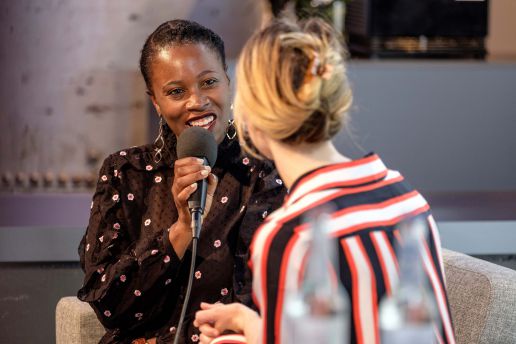
ABOUT THE AUTHOR
Founding editor-in-chief of FashNerd.com, Muchaneta has worked in the fashion industry for over 14 years. She is currently one of the leading influencers speaking and writing about the merger of fashion with technology and wearable technology.
Muchaneta Kapfunde | editor@fashnerd.com
The New Textiles Economy
The New Textiles Economy, A Catalyst for Transformation?
AN INDUSTRY INSIGHT BY FASHNERD FOUNDER MUCHANETA KAPFUNDE.
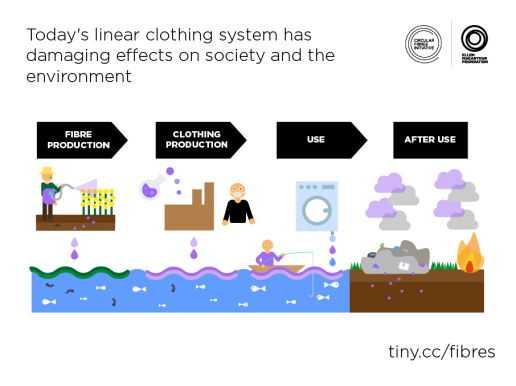
Although textile businesses play a fundamental part in the global economy, future-proofing this somewhat rigid industry with new technologies is no small feat. The good news is that cutting-edge innovations now have more authority than ever before. No longer labelled as gimmicky, these actionable tech solutions represent a real-life potential to change the textile world’s processes, materials, and techniques for the better. Which brings us to the question, how can one become an active shaper in the new textiles economy?
A New Mindset Speeds up Implementation
With the pandemic still dictating how we do business, new technologies have become unlikely superheroes. Bringing about a new mindset to the fashion and textile industry, new innovations have been encouraging companies to seize the opportunity to shift their trajectory towards a new textiles economy. But what is the new textiles economy?
Driving positive change during these challenging times, the new textile economy promises long-term benefits built on the reuse, remake, and recycle models. Based on circular economy principles, Ellen MacArthur Foundation’s paper called ‘A new textiles economy: Redesigning Fashion’s Future’, defines the new textile economy as “regenerative and restorative”. Designed to “phase out the use of non-renewable resources”, the new textiles economy can minimise the adverse impact by significantly reducing resource usage during the production, while in use, and after-use phases.
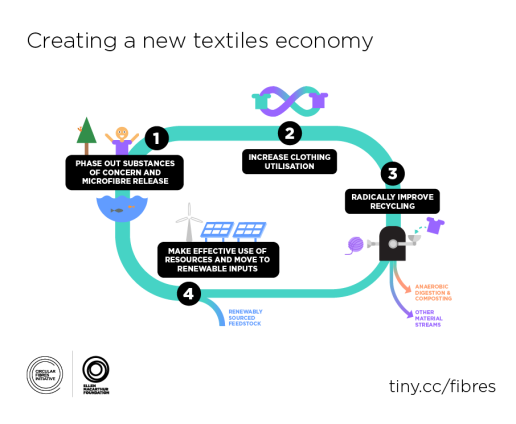
An excellent example of a company speeding up implementation with a new mindset is Nike. Committed to phasing out non-renewable resources, Nike adopted the ‘Rewire’ approach, which is a supply-chain strategy based on “integration, incentives, and innovation”. It was a change that helped Nike propel sustainability to the forefront of their business strategy.
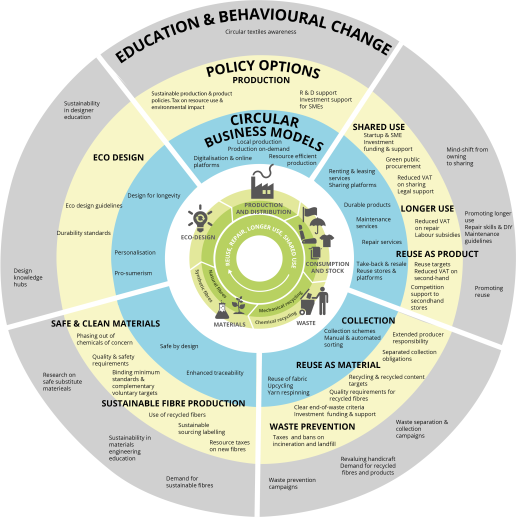
A Shared Vision Sets New Industry Standards
As the new textiles economy ushers in a different system level, a shared vision is emerging. Encouraging rapid acceleration within the textiles industry, the shared vision represents an opportunity for textile businesses to commit to disruptive partnerships that enable a more effective system-wide progress. Collaborations have not only been playing a vital role in stimulating strategies, but they have also made it possible for textile businesses to test new models at scale.
Setting new industry standards are companies like Reverse Resources. Described as the Uber of textile waste, Reverse Resources is a tracking and trading platform for textile waste that brings manufacturers and buyers together. Providing 360-degree transparency of the waste flows, Reverse Resources is one of many innovative companies taking critical action in supporting the new textiles economy by being an active shaper bringing about a systemic fix that supports structural change.
A Catalyst for Transformation?
Is the new textiles economy a catalyst for transformation? The answer is yes. The transformation of the textile industry is steering businesses towards a new textiles economy that is economically and environmentally better for everyone. Built on a shared vision and fueled by new technologies, the new textiles economy is excitingly ushering in a long-overdue evolutionary change of the linear system, which has been ripe for disruption for a very long time.

ABOUT THE AUTHOR
Founding editor-in-chief of FashNerd.com, Muchaneta has worked in the fashion industry for over 14 years. She is currently one of the leading influencers speaking and writing about the merger of fashion with technology and wearable technology.
Muchaneta Kapfunde | editor@fashnerd.com
5 Tech Trends Reshaping Apparel Manufacturing
5 TECH TRENDS RESHAPING THE FUTURE OF APPAREL MANUFACTURING
AN INDUSTRY INSIGHT BY FASHNERD FOUNDER MUCHANETA KAPFUNDE.
Transforming textile manufacturing and reshaping how the industry does business, new technologies are not only being adopted; they are trending. With various innovations on offer, here are the top five tech trends that have proven popular in helping apparel manufacturers create greater efficiency and build better relationships between producers, suppliers and customers.
1. Digitisation
It seems that digitisation in manufacturing really could be the perfect match. Defined by Gartner as “the use of digital technologies to change a business model and provide new revenue and value-producing opportunities”, digitisation is shifting manufacturing towards becoming a digital business.
Changing how products are designed, created, utilised and sustained, the digitisation of manufacturing has proven, to transform the operations, processes, and energy footprint of factories and supply chains while increasing opportunities in efficiency, productivity and accuracy in the textile industry.
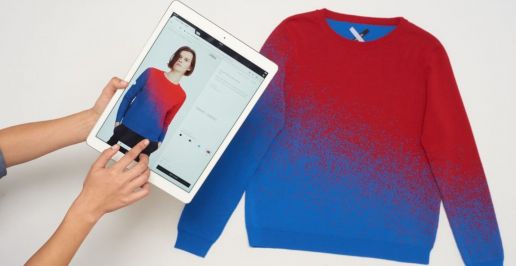
2. Fashion on Demand
Yes technology can finally support the need for fashion on demand. Technology is revolutionising what fashion on demand means. Once regarded as uneconomical, on demand fashion was once seen as impossible to achieve on a larger scale. The good news is that this is no longer the case since technology is now at a level that can support the rise of made-to-order and made-to-measure.
Therefore, fashion and textile businesses that want to create an on-demand supply chain can turn to new software, like the one provided by companies like Unmade, a London based startup that has worked with the likes of Christopher Raeburn and Avery Dennison. Offering convenience, fashion on-demand has also proven beneficial for fashion brands like New York-based Prabal Gurung, who have made the shift and now 25% of all their orders are now made-to-order.
Another great example is the knitwear company, Ministry of Supply. They have reportedly tested 3D printing knitted blazers and dresses and allowed their customers to choose different styles and colours. Within two days, the items were ‘printed’ and sent to customers. So again, innovation could mean that a fashion on-demand product could be delivered in the same amount of time as most fast-fashion labels, now that is progress.
3. Robotics
Want to implement robotics into your textile manufacturing process? Then read on. Groundbreaking advancements in recent years have allowed robotics in the textile industry to progress to the point where development has become highly advantageous for textile manufacturers. Ripe for transformation, robotics are becoming less of an obstacle and more of a technology that can positively transform the textile industry for the better.
As the automation wave continues to take over textile manufacturing, companies like Sewbo provide innovative solutions that support the automation of apparel manufacturing. Sewbo’s solution has been created to allow manufacturers to create higher-quality clothing at lower costs while shortening supply chains and lessening the long lead times that hamper the fashion and apparel industries. By helping to reduce the complexity of today’s intricate global supply network, the great thing about Sewbo’s technology is that it is suitable for a wide range of manufacturing applications.
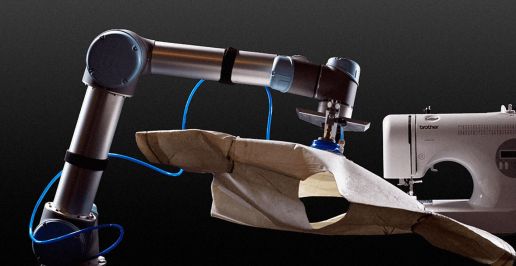
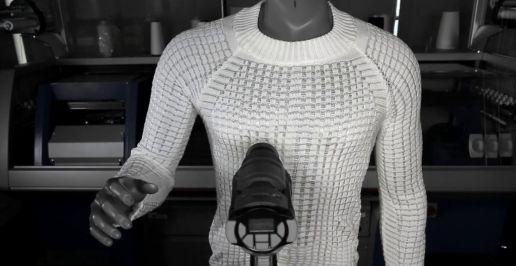
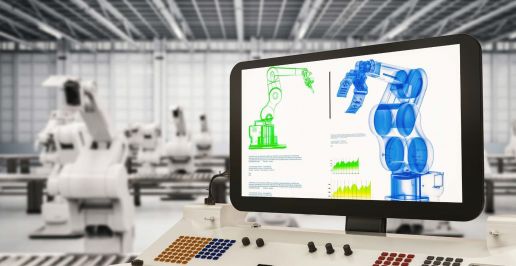
4. Machine Learning
A McKinsey report once stated that machine learning would reduce supply chain forecasting errors by 50% while also reducing lost sales by 65%. These numbers confirm that machine learning impacts textile manufacturing, especially in these three areas of business — operations, production, and post-production. Other great benefits of machine learning in manufacturing include improving product development, quality control, security and supply chain management.
Although some still argue that the technology is still in its infancy, those who have chosen to utilise machine learning fully have reduced their manufacturing costs and drastically improved product quality. Therefore, it is clear that using AI-powered systems in one’s manufacturing processes demonstrates that machine learning could bring numerous opportunities to enhance nearly every aspect of your business.

5. 3D Printing
Could 3D Printing be suitable for mass customisation? Well, some experts believe that 3D printing has the potential to help fashion and textile businesses who are looking to switch to an alternative customisable production method. Perhaps the biggest advantage of this type of tech tool is that it allows customisation choices to be implemented within the 3D file straight away before production.
If you are wondering whether there are any illustrative examples of fashion brands riding the mass customisation wave with 3D printing, the excellent news is that there is. Showing the way was the collaboration between Stratasys x Ganit Goldstein. Their partnership explored the melding of the traditional method with the latest 3D printing technology. “This is still a relatively new domain; we need to challenge ourselves to envision the next steps and to embrace this new design freedom to open up its true frontiers,” explained Naomi Kaempfer, Creative Director of Art, Design and Fashion at Stratasys.

ABOUT THE AUTHOR
Founding editor-in-chief of FashNerd.com, Muchaneta has worked in the fashion industry for over 14 years. She is currently one of the leading influencers speaking and writing about the merger of fashion with technology and wearable technology.
Muchaneta Kapfunde | editor@fashnerd.com
How IoT is Making A Sustainable Impact on Retail
Could IoT Be The Technology Solution That Drives More Fashion Businesses To Adopt A Circular Business Model?
ARTICLE BY MUCHANETA KAPFUNDE, FOUNDING EDITOR-IN-CHIEF FASHNERD.COM
Did you know that IoT, Internet of Things, is all around us? With more connected things than people globally, we live in an IoT-enabled world that has the potential to power, a circular future for fashion and retail businesses. Destined to make a quantifiable impact, the Internet of Things has been busy proving itself to be beyond the hype.
Described by experts as a service innovation tool, IoT has been touted as the solution that will help fashion businesses change how they operate when consuming resources and waste production. Designed to make businesses smarter and more responsive, retailers adopting IoT are not only managing to transform their entire value chain; but they are also reducing the impact their business has on the environment. How might you ask? Allow me to elaborate.
Harnessing the Power of IoT
Responsible for automating the world around us, IoT has been described as merging the digital and physical universes. No longer restricted to wearable devices, intelligent cars or smart homes, IoT is a technology solution that offers fashion retailers’ the opportunity to interact and connect with customers, manufacturers and other businesses.
As a solution that presents retailers with the opportunity to reduce their environmental impact, IoT has become vital in supporting the industry to push forward sustainable measures. Sustainably innovating the retail sector and moving fashion towards a new and exciting direction are game-changers, one of them is Eon. The NY based startup, which partnered with Microsoft last year, has developed an IoT software that connects and stores digital identities of connected apparel.
It is no secret that retailers are more adaptors of innovation than innovators themselves. This is why Eon’s IoT platform continues to play a more vital role in everyday business. Redefining fashion and helping the industry scale new circular business models such as rental, resale, digital wardrobing, peer-to-peer exchange, styling services, reuse and recycling, Eon plans to bring a connected and circular economy across fashion to the forefront, which is why in 2020, alongside Microsoft they pledged to have 400 million fashion products online by 2025.
In an interview at Munich Fabric Start’s Keyhouse, in September 2019, I sit down with CEO and found of Eon Group, Natascha Frank. Watch the interview here.
IoT, Playing a Pivotal Role in a New Retailing World
IoT is helping fashion businesses have it all; commercial growth and a strategic system that allows them to keep their environmental commitments. Through IoT sensors and IoT-enabled data analytics, unique opportunities are not only being brought to the forefront; they are also delivering change. Playing a pivotal role in a new retailing world, IoT solutions are positively impacting the fashion industry because they have created conditions that are instrumental in encouraging retailers to increase their sustainability initiatives. Introducing a new awareness, IoT is helping deliver sustainability breakthroughs that include reducing energy use and carbon footprint, optimizing supply chains, sourcing responsibly and minimizing waste.
So it should not come as a surprise that the World Economic Forum estimates that 84% of IoT systems in use have the potential to meet the United Nations Sustainable Development Goals. Even with the scepticism still being received, IoT is still considered to be one of the largest enablers pushing forward the rise of Internet-enabled retail. Not only has it been improving efficiency and transparency, but IoT’s impact has also helped create conditions that allow for specific shifts to happen in retail. With continuous noise coming from the IoT space it is not without its challenges. Read more on this here.
One of the setbacks arising from this nascent trend is the issue of security and privacy. It is a problem that is slowing down the benefits that the IoT revolution can add to the industry’s sustainability initiatives. With most retailers admitting to not being technology experts, it is this lack of IoT know-how when it comes to security and privacy problems that is hindering the widespread adoption of the solution. IoT brings to the table a different set of privacy issues, separate from the ones we already face with ‘regular’ internet. So what is needed is a realistic approach to privacy and security, that came put in place sooner rather than later.
Closing the Gap Between ‘Wanting to be Innovative’ and ‘Being Innovative’
Although not everyone expects IoT to become a universal tool, it does not take away from its tremendous potential to make a pervasive impact on fashion retailers’ sustainability goals. Still considered a relatively young complex technology, IoT has, with time, become a valued digital technology respected for its ability to offer retailers a unique opportunity to tackle some of the most pressing issues like running a greener fashion business.
Accelerated by COVID-19, the gap between ‘wanting to be innovative’ and ‘being innovative’ is growing smaller. It is a change that has come about, mainly due to more retailers starting to invest in IoT for sustainable purposes. As IoT technology goes through continuous improvement, retailers need to be open to playing the long game because I believe that when it comes to the merger of IoT, sustainability and retail, we haven’t seen anything yet.

ABOUT THE AUTHOR
Founding editor-in-chief of FashNerd.com, Muchaneta has worked in the fashion industry for over 14 years. She is currently one of the leading influencers speaking and writing about the merger of fashion with technology and wearable technology.
Muchaneta Kapfunde | editor@fashnerd.com
Why It's Time For A Digital Intervention
Why It's Time For A Digital Intervention
ARTICLE BY MUCHANETA KAPFUNDE, FOUNDING EDITOR-IN-CHIEF FASHNERD.COM
In an increasingly digitised world, the present-day landscape for fashion businesses is changing. The technology tinkerers and digital blacksmiths are challenging the traditional way of designing. Digital activity is no longer just focused on sales; instead, there is a new digital approach transforming existing design practices. Reimagining the process of designing, creating and showing garments, digital tools are arming designers and brands with technology created to eliminate the manual steps usually taken in the traditional fashion design cycle.
A Digital Approach To Garment Creation
With optimism towards technology growing, more brands are becoming open to adopting new business models and beginning to find their footing in the digital economy. As we enter 2021, more fashion designers are starting to understand why digitally managing the back end of their business is essential which has meant that we are hearing less of “We know digital is important, but…”. Through digital intervention, fashion businesses are not only altering how they operate day-to-day, they are also taking a step back and thinking about how digital tools could add value to their business.
Moving towards a more digital model presents exciting opportunities, especially for fashion houses, grappling with how to move forward post-pandemic. Created to enhance what we want to achieve long term, committing to the digital process will not only eliminate multiple rounds of pattern-making and model fittings; it will also allow fashion brands to identify and unlock opportunities. Yes, going digital can come with a few uncertainties, but with everything going on, there has never been a more perfect moment to change your internal mindset.
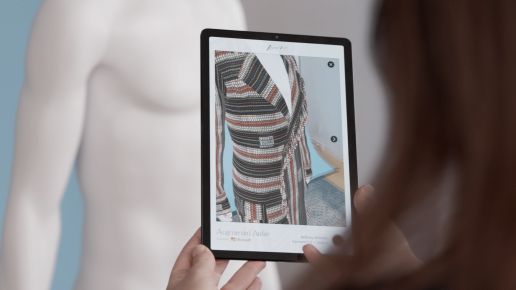
Be Inspired To Innovate and Push the Boundaries
Taking a visionary approach is founder of fashion magazine More or Less, Jaime Perlman. Last year the former Vogue UK creative director teamed up with Microsoft to launch ‘Augmented Atelier‘. The partnership was designed to advocate new tools for an alternative take on design. “It’s really about using technology as a form of imagination and how that reacts with the real world in a physical space. It’s about using technology to innovate and push the boundaries of what fashion can mean,” explained Jaime Perlman on the Microsoft.com blog.
Harnessing the capabilities of Microsoft Azure Spatial Anchors, Pearlman is not defying traditional methods independently; she has Bethany Williams, Phoebe English, Fredrik Tjærandsen, and Rottingdean Bazaar as part of her tribe. Working together, they have been busy bringing forward tools that offer the kind of solutions that bring sustainability, innovation and imagination to the forefront of the industry.
Defining Your Place In The Digital Economy
Streamlining the design process, pushing boundaries and reshaping attitudes, taking a digital approach to garment creation is not a radical choice but a necessary one. Although the digital journey can be challenging, more and more innovative tools are growing in prominence and being introduced to the industry. It is these tools that are giving fashion brands a better understanding of the opportunities that they present. Yes, digital technology is making it easier for fashion businesses to move towards a more digital model, but the question now is, are you, as a business, ready to embrace the change taking place in the industry?
With startup designers leading the way and defining their place in the digital economy, some still hesitate. If you are unsure if digital tools are the way forward, imagine this, having the ability to transfer real-life fabrics to your design. The good news is that you do not have to imagine anymore, thanks to The Scanatic™ Nuno3D Service. Digitally empowering fashion, the company offers a solution that allows for realistic fabric visualisation by rendering the fabric scan in the most true-to-life. It is an invention that enables designers to import different texture maps, like knitted fabrics, woven fabrics, synthetic fabrics etc.
Then there is CLO. Promising to revolutionise the design process by combating inefficiencies within the fashion industry, CLO is a software that can transform a brands workflow. With CLO, brands could bring their business presence to the next level. Offering true-to-life 3D garment simulation, CLO addresses today’s challenges by providing an efficient 3D design process. By guiding the fashion industry towards a future where designers can seamlessly integrate 3D into their operation, CLO makes it possible to virtualise a garment and transform a designer’s entire workflow.
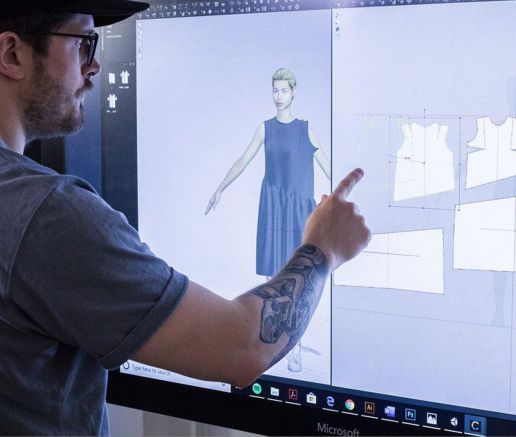
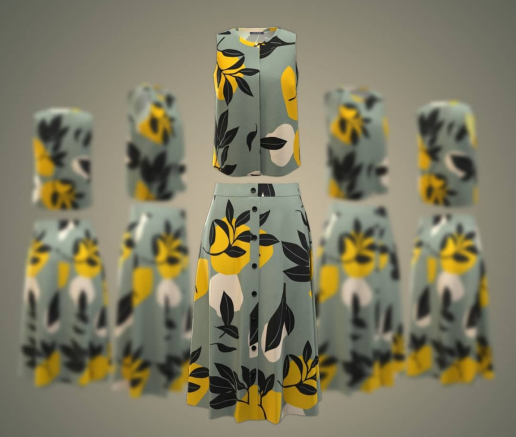
A firm favourite is TUKATECH. The software company has two digital fashion products, TUKAcad and TUKA3D. Created for designers looking to streamline their production process, the software eliminates the need for physical samples and makes it possible to create life-like digital collections. One of the critical features of TUKA3D is that it includes 3D virtual sampling in 5 visual ways, real-life virtual fit sessions and fabric and trims library.
Last but not least is Virtuality.Fashion. Driven to bring your fashion ideas to life, the company has made sharing creations virtually without sending physical samples easy breezy. Powered by C-Design, the collaborative platform makes sharing and collaborating with potential buyers or internally much more straightforward.
Digital Tools, The Ultimate Must-Have?
Presenting new opportunities for an industry that needs to change – digital tools are becoming the ultimate must-have for fashion businesses ready to transform existing design practices. More affordable than ever before, the good news is that the adoption of full-fledged digital solutions has gone from pleasant to have, to need to have. As we enter 2021, the fashion brands that are taking this positive step in the chaotic upside-down world we are currently doing business in are most likely going to be around for the long run, and for those who are reluctant to adopt digital tools, some experts predict that soon it will be too late.
7 Reasons Why You Should Continue Your Journey Despite The Pandemic
7 Reasons Why It Is Imperative You Continue Your Journey Despite The Pandemic
Article by Muchaneta Kapfunde, Founding Editor-in-Chief FashNerd.com
In these perilous times, there is no denying that the future of fashion has become uncertain. Fashion businesses, stuck between a pause and a pivot, are looking to digital, innovative and hybrid approaches to push their narratives forward. Open to new opportunities sprouting up, despite the pandemic, some fashion businesses are taking the “when life gives you lemons, make lemonade” approach, to overcome a crisis that shows no signs of stopping.
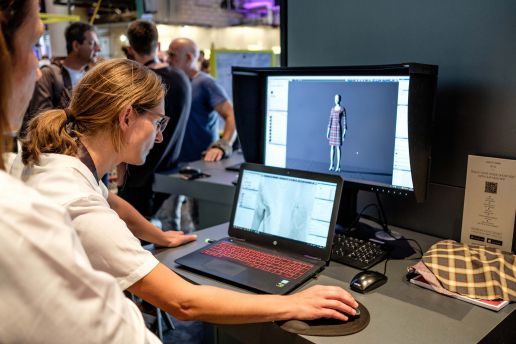
“Your body may be in quarantine, but your mind doesn’t have to be”
explained fashion designer Jeremy Scott when interviewed for Harper’s Bazaar. True, in an age where timing is everything, there are several reasons why continuing your fashion business journey during this very exceptional time is the way forward. Here are seven:
1. Take Advantage Of New Tools and New Ways of Working
It is time to adopt a more flexible mindset when it comes to technology-driven tools and finding new ways of working. Doing so will allow you to be more open to rewiring your creative development process, making navigating through troubled waters easier. Also, creating networks gives you access to resources that could help you strengthen your business and help you think outside of the box so you can welcome new tools and new ways of working with your team.
2. Now Is A Great Moment to Experiment and Try New Techniques
With social scientists making significant contributions to the field of fashion design research, this is a great moment to experiment and research new techniques that will assist you with your business. This could include finding new eco-friendly materials that you could use or using technological innovations capable of helping you design and manufacture your products more mindfully.
3. Sustainability and Consciousness Needs To Be Part Of Your DNA
The pandemic has drawn attention to why we need to have sustainability and consciousness embedded into our business’ DNA. Moreover, it has also shown that the future of fashion can no longer be built on putting profits ahead of people’s health and safety. The lesson here is that the ‘old way’ of doing business no longer works, instead steer your business strategy towards a more clean, safe, fair, transparent and accountable mindset.
4. Join The Conversation Addressing Economic and Manufacturing Realities
The emerging modern world is all about investing in tomorrow, which means that you need to think about economic and manufacturing realities. This will help you set realistic expectations in terms of product delivery and product credibility.
5. Access To Start-up Technology Innovation
From the idea of virtual showrooms to digitally produced samples and campaigns, the demand for start-up innovation is growing. The good news is that fashion businesses have more access to advanced technology than a year ago. Companies that are adopting innovation can reimagine a new direction and head towards it.
6. Transparency is Slowly Becoming The Norm
COVID-19 has highlighted the significance of brand transparency. Before the pandemic, being transparent was a choice; now, it is a necessity. Brands are currently being held accountable for their environmental practices, so the way forward would be to disclose your policies and commitments when it comes to social and ecological issues.
7. Represent The Next Normal
With so much going on, all businesses should be driven by a need to make a positive contribution to the decision-making process that will shape the future of fashion. Doing so will differentiate you from other fashion businesses and prepare you for what is most likely going to be the next normal.
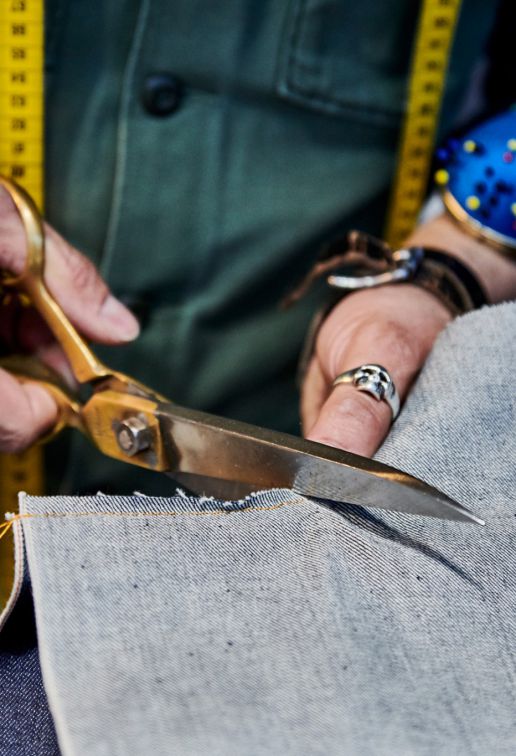

OPENING TIMES
2. MARCH 2021 · 9:30 – 18:30
3. MARCH 2021 · 9:30 – 18:30
4. MARCH 2021 · 9:30 – 16:00
LOCATION
MOC Munich | Halls 1 – 4 Groundfloor
Lilienthalallee 40
Germany, 80939, Munich


